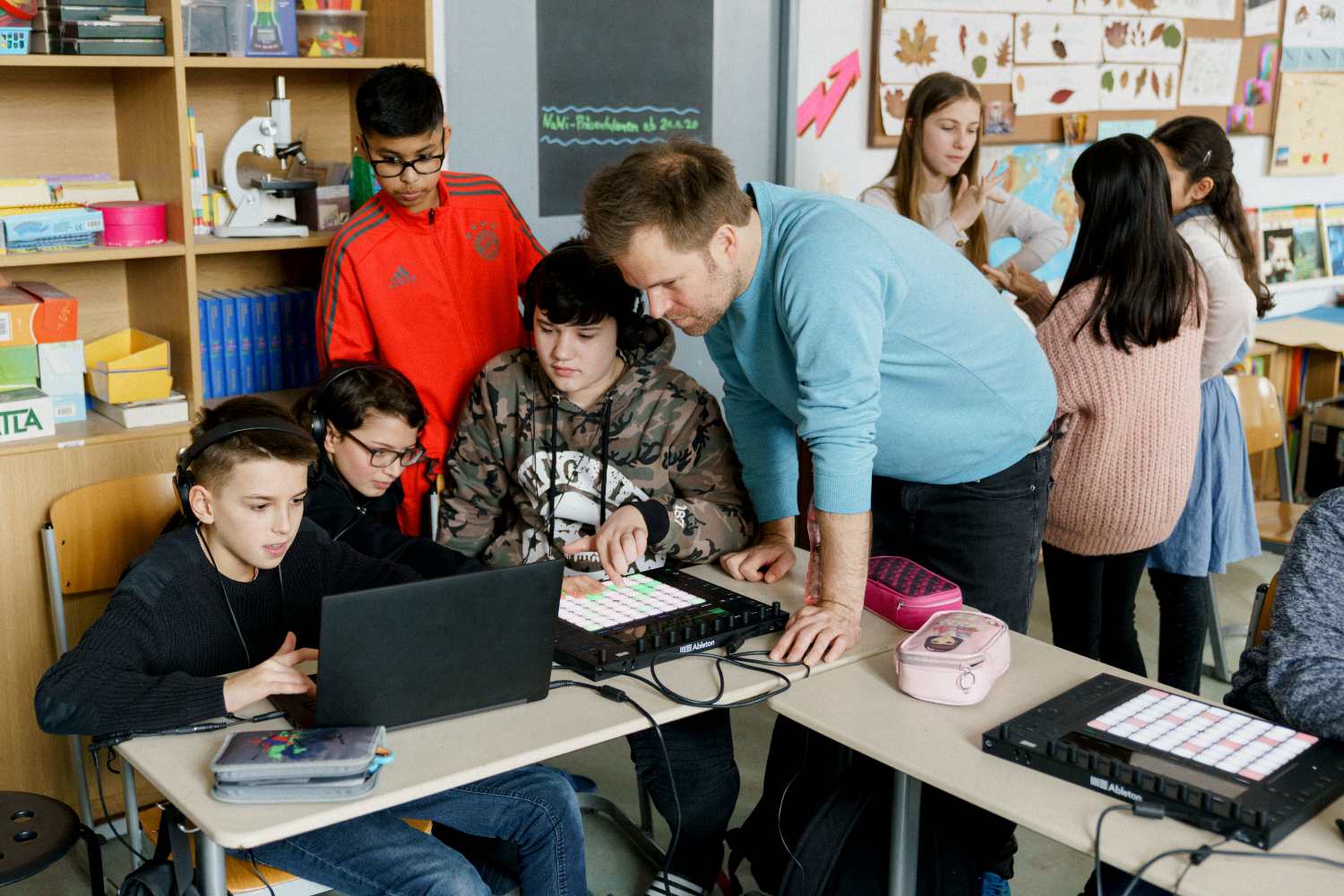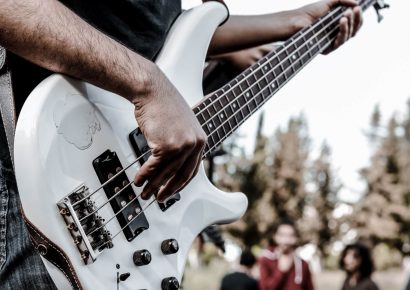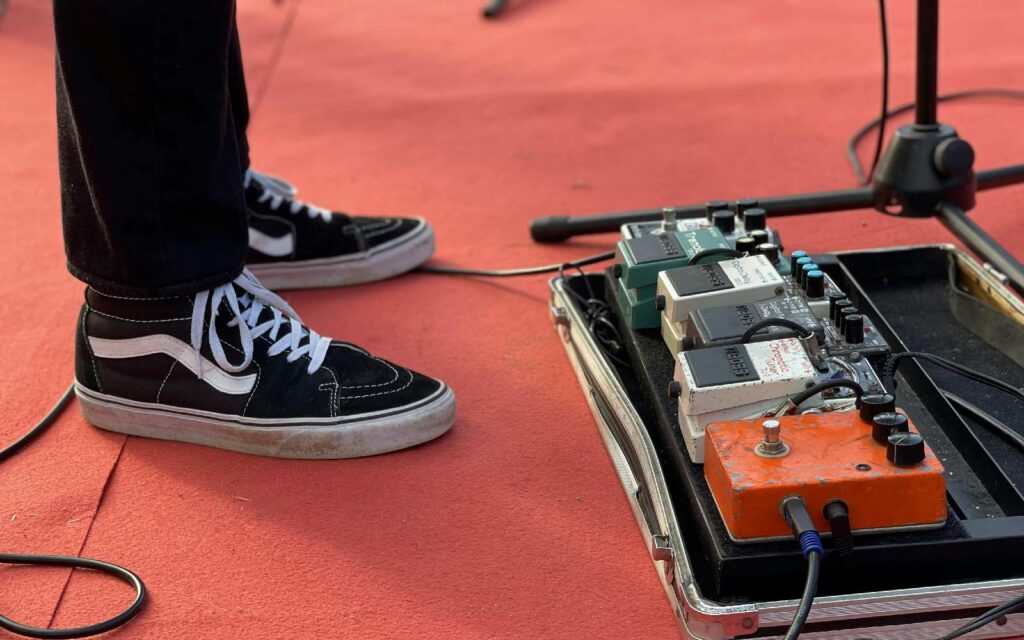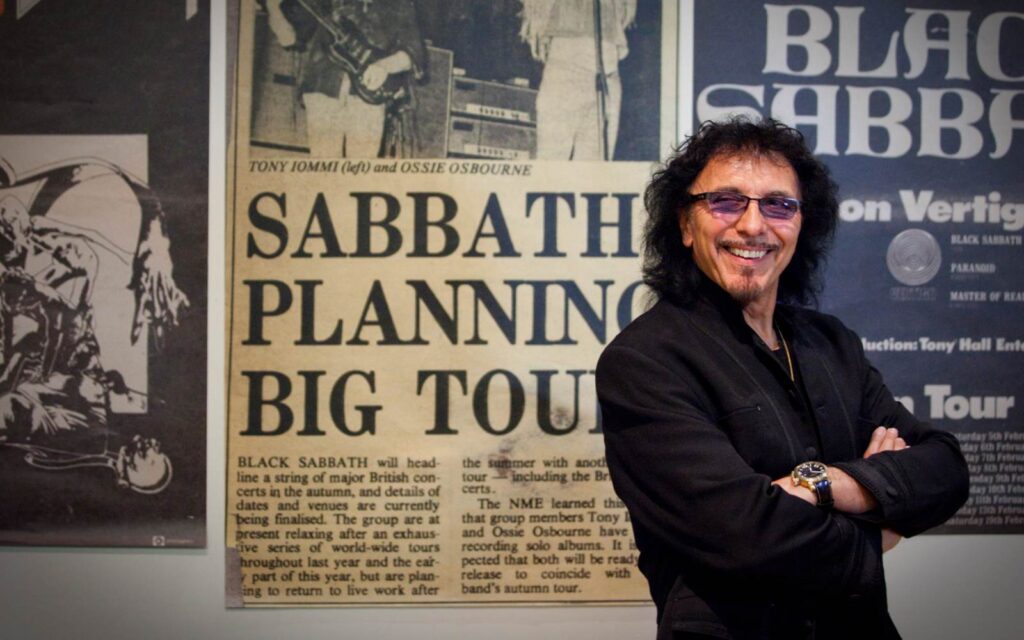Photography by Max Zerrahn
Using Ableton Live as the ultimate music education tool
I love Ableton Live. There I said it.
Everyday, I use Ableton Live for production, songwriting, and education, and unless something drastically changes in the immediate future, I feel like I’m destined to be an Ableton guy for life.
My first DAW was Pro Tools, way back in Digidesign 001 days, circa 1999. An undeniable recording revolution for sure, but back in those days, the proprietary hardware (and the need for my computer to be constantly tethered to it) definitely left me feeling a little less than liberated, creatively speaking.
Read all the latest features, columns and more here.
When my trusty 001 finally bit the dust, I was forced to upgrade and purchased an M-Box Pro to remain in the Pro Tools ecosystem. In the package came a copy of some strange “pseudo” DAW called Ableton Live Intro. At the time, I had no idea what Ableton was or what it was all about. ‘Was it named after some quaint overseas town?’ ‘Was this for Live recording or something?’ These are the kind of questions that immediately came to mind as I held the peculiar disk in my hand. Simply put, Pro Tools was the DAW at the time and I would not hear a word otherwise, so initial interest was low. Nonetheless I installed the software and had a playaround. While I found Ableton Live’s Arrange View timeline made sense, the unique Session View appeared pointless and baffling, so I shelved it for the time being. I was flying blind after all.
Some time later I was working on music for an exhibition at the National Gallery of Victoria showcasing the iconic work of Punk fashion designer, Vivienne Westwood. A creative block left me devoid of inspiration, drifting aimlessly in the ancient “pre-YouTube” era. In desperation, I did the unthinkable – “I read the $@&# manual!!!”. An hour or so later, I had a cool mashup of the Sex Pistols’ Anarchy in the UK and I Want Candy, by Bow Wow Wow. My interest piqued, I started to use Ableton Live as a practice tool. I created Live Sets with time stretched songs and pitch shifted tracks to avoid retuning my guitar. I could loop difficult passages without the need to rewind CDs or vinyl and my guitar playing progressed no end. Winning!
With each subsequent version, more features were added. I found myself drawn deeper into the clips and blips of Ableton, all the more notable considering I’m more a dyed in the wool instrumentalist (think punk rock, death metal meets jazzabilly guitar shredder. No doof-doof here, thank you very much!). Over time, I learned Ableton simply offered music making tools that were not available in other DAWS, and to a great extent, still does.
Fast forward to 2022, I’ve been a music educator for more than 20 years and Ableton Live has replaced my other DAWs for all but the most track heavy audio sessions. Why? The deceptively simple interface for starters. The ability to create shortcuts for any set that I’m working on with a single key stroke so all my bass track plugins open by typing the letter “b”. The same for drums – “d”. What’s going on with the compressor and EQ on the master channel, or 2 bus? I just hit the number “2”. Guitar bus – “g”. You get the picture.
Even better, I can control any parameter with … literally… anything, making it a creative playground without peer. Need to recycle a drum loop into mapped samples? Right click and done. Need to convert a recorded kick drum performance to MIDI so you can layer a sample? Right click and done. Want to turn a cymbal into an instrument you can play from a keyboard? Drag, drop, tweak, play. This is the kind of simple, streamlined workflow that Ableton Live encourages. It’s about fun, creativity and efficiency, after all this is music, not rocket science.
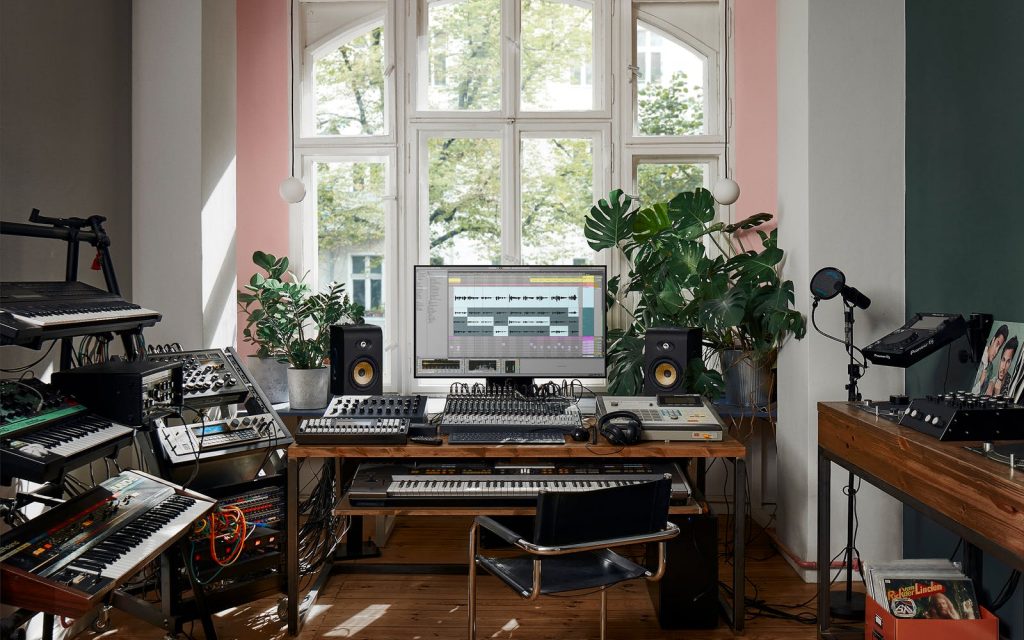
It’s no secret the design philosophy for the Ableton Live user interface leans sharply towards a minimalist, uncluttered look. This helps reduce overwhelm for newbies and allows the ninjas who walk among us, to stay focussed. As we know, however, the devil lies in the detail so if I was to level a criticism at the approach, it would be that many users are simply not aware of many of the advanced features Live offers concealed behind right clicks and insider knowledge.
Perhaps to address this, and more besides, the team at Ableton has created and curated an impressive library of educational resources. Regardless of your DAW of choice, these resources represent an incredible learning opportunity for producers, students, teachers and institutions. Best of it’s all free! No pay walls! No “signup for spam” grift. All you need is a computer and an internet connection.
Here are some personal highlights from Ableton’s impressive knowledge base:
- Learning synths – I’ve done these lessons with students as young as eight and the level of understanding obtained is incredible!
- Getting started – With chapters covering Beats, Chords, Arrangements and more, it takes you a long way from the beginning.
- Classroom projects – This one is more Ableton specific but offers some incredible creative resources for teachers and students, alike.
Even if you aren’t a Live user, the Ableton website is a fantastic destination on your web travels. The artist profiles are amazing and, in the time of restricted travel, provide a fascinating survey of international producers. Hats off to the team for capturing such a broad range of artist and perspectives.
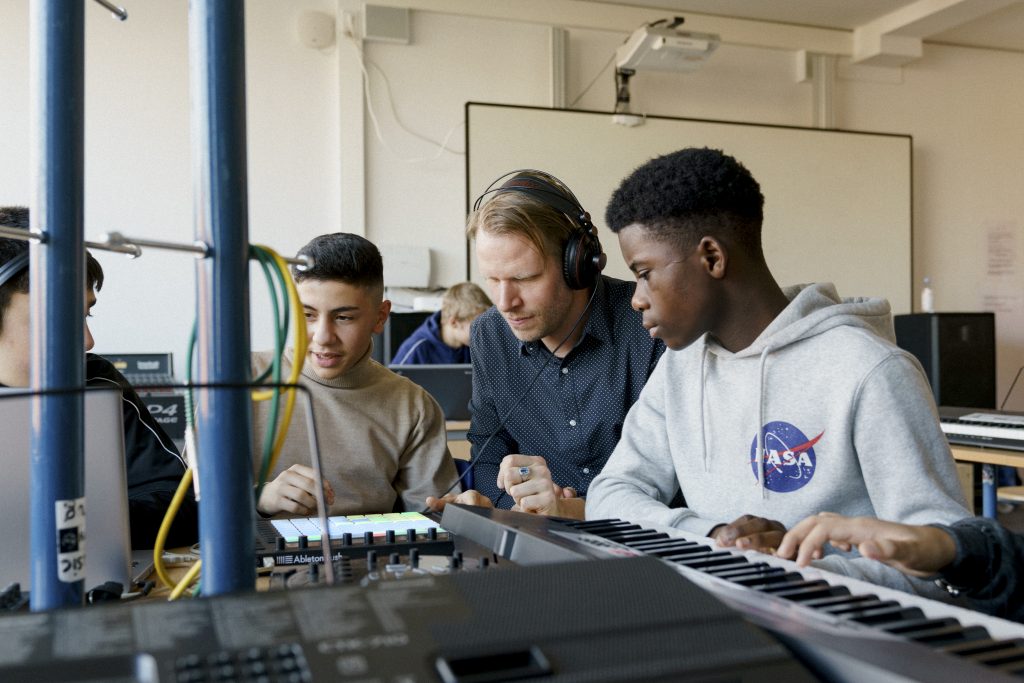
As an educator, I have taught countless classes using Ableton Live. In little more than a few hours, I successfully explained complex music theory concepts, such as triads, scale degrees, arpeggios and tonic relationships, to high school students. When creating in Live, the piano roll editor is so simple and streamlined. Great for beats, chords or melodies, the workflow is fast even if all you have is a mouse. As of version 11, the piano roll editor allows users to show only the notes in a given scale. It is liberating for students to encounter only the notes in a key and, by removing the accidentals, it is easier to avoid… well… accidents! Select F Lydian mode from the drop down and start experimenting. With the “out of key” notes hidden, I have been humbled by the harmonic and melodic creativity a novice can bring to the table. Over time, students can explore progressions and melodies to gain an understanding of the sonorities and emotions each key/mode invokes. The keys can be explored in depth later, and as everyone’s attention is at an all-time low, I’m not going to ask “Tell me the sharps in a B# Locrian mode”, in the first year!!! Let’s jam, is a better call to arms!
Ableton’s hardware instrument controller, Push, has been around for some time now. A unique combination of instrument and controller that can be used to make, mix and produce with a greatly reduced reliance on the computer screen. When Push 2 was released in 2016, Ableton offered users a trade-in on the original Push. The trade-ins were shipped to Berlin, reconditioned, and then made available, without cost, to schools and not for profit organisations around the world.
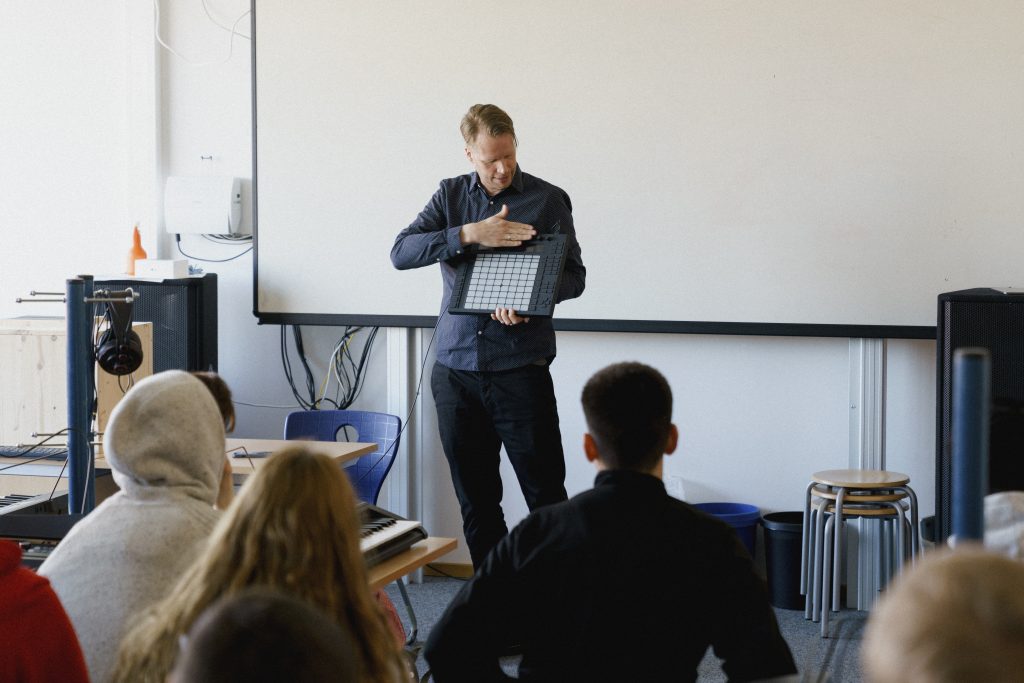
When teaching at a school for at risk youth and refugee kids, I applied for the Push trade-in program. A short while later, the school received 100 Pushes with Live Intro licenses for distribution throughout Australia. A truly life-changing outcome. While the original Push trade-in offer has concluded, Ableton’s support continues through the Ableton for the classroom initiative, which offers a range of support and resources for music teaching. You can find out more information here.
Sitting independently of Ableton the company, exists a passionate and generous user community. These “Ableton User Groups”, meet regularly around the world. For over a decade, the Melbourne Ableton User group has been running a monthly meet up.
Showcasing artists and producers from Australia, and around the world, the monthly sessions are a friendly forum that provide a rich source of information and inspiration for producers, teachers and students. An incredible resource for any music maker or producer. Some User Group sessions can be accessed online too.
A gushing fan boy? Guilty, but I reached this point reticently over many years. Courted by Ableton’s ever evolving software, hardware, user community and a truly democratic approach to music making and education, I fell in love. Notwithstanding the incredible Live and Push offerings, the online educational resources are simply some of the best around. I haven’t even mentioned the Max4Live offering that provides a path into DSP programming along with some of the most insane plugins and instruments ever conceived.
When you combine all of this with ongoing initiatives to provide hardware and software resources to those lacking access, without fanfare, Ableton has positioned itself as a company hellbent on bringing music and music education to the masses.
Greg Long is an audio educator at RMIT University and is one of Australia’s leading Ableton experts. To download Ableton head to their website.
